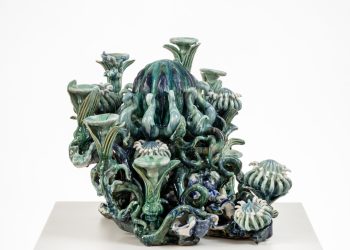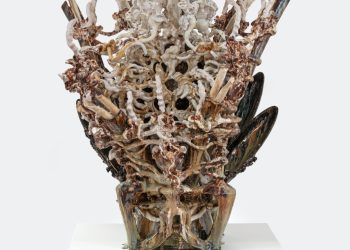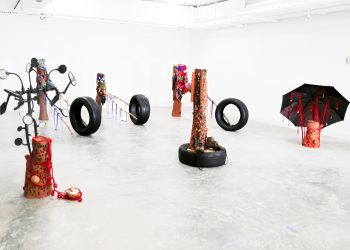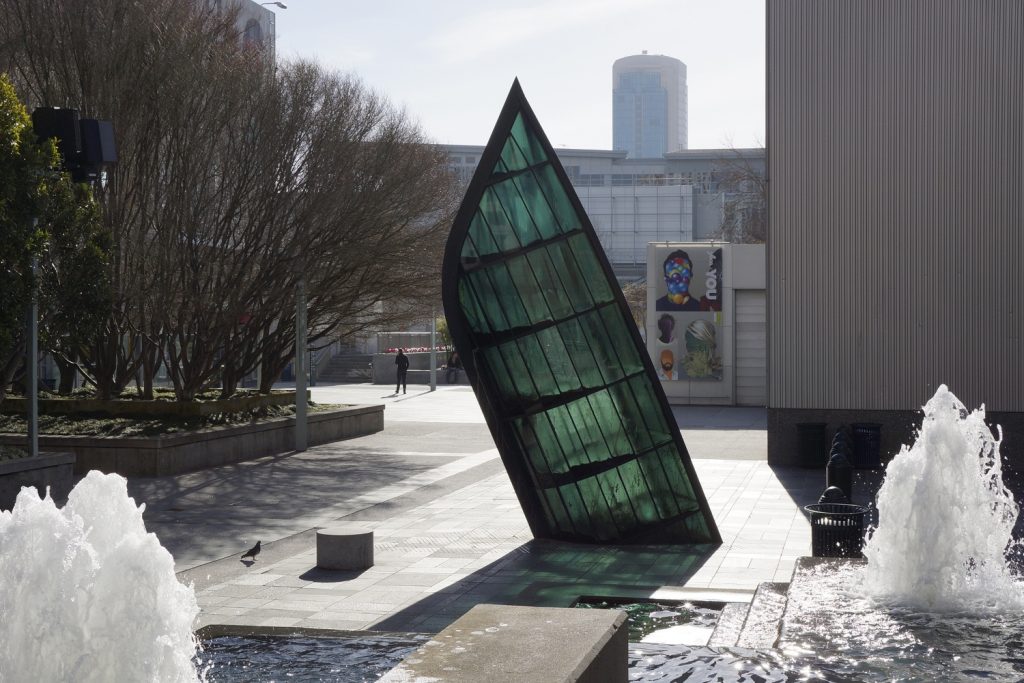
Deep Gradient/Suspect Terrain.., site view, 1993, steel, tinted glass, ocean floor sediment, fresh water mist, native flora, 20 ft. x 4 ft. x 8 ft. 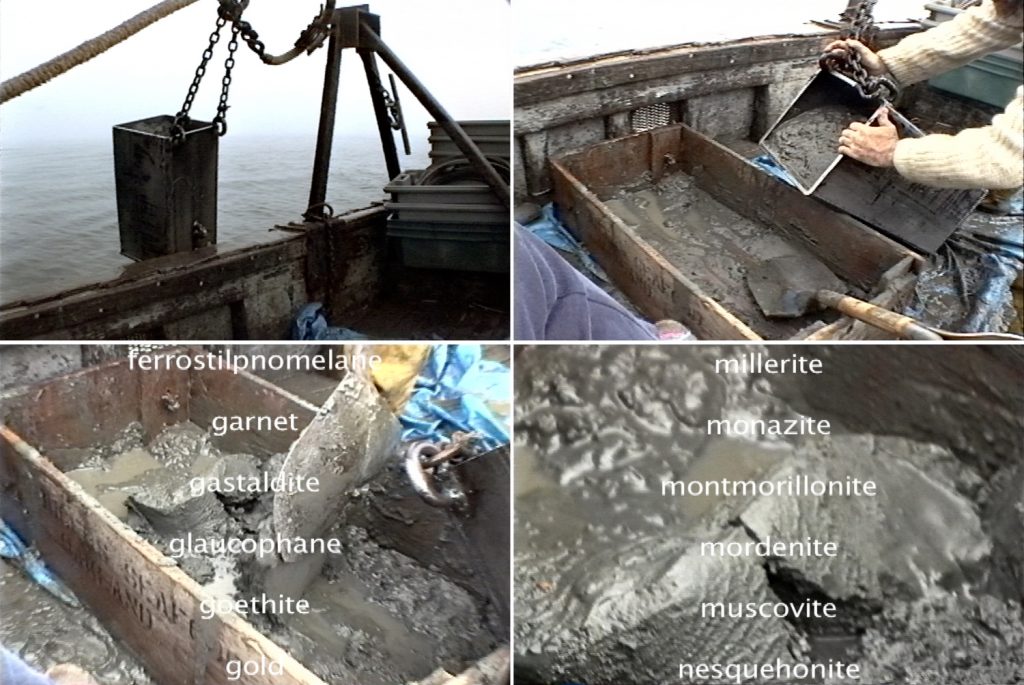
Deep Gradient/Suspect Terrain.., sediment collection, 1993, ocean floor sediment. 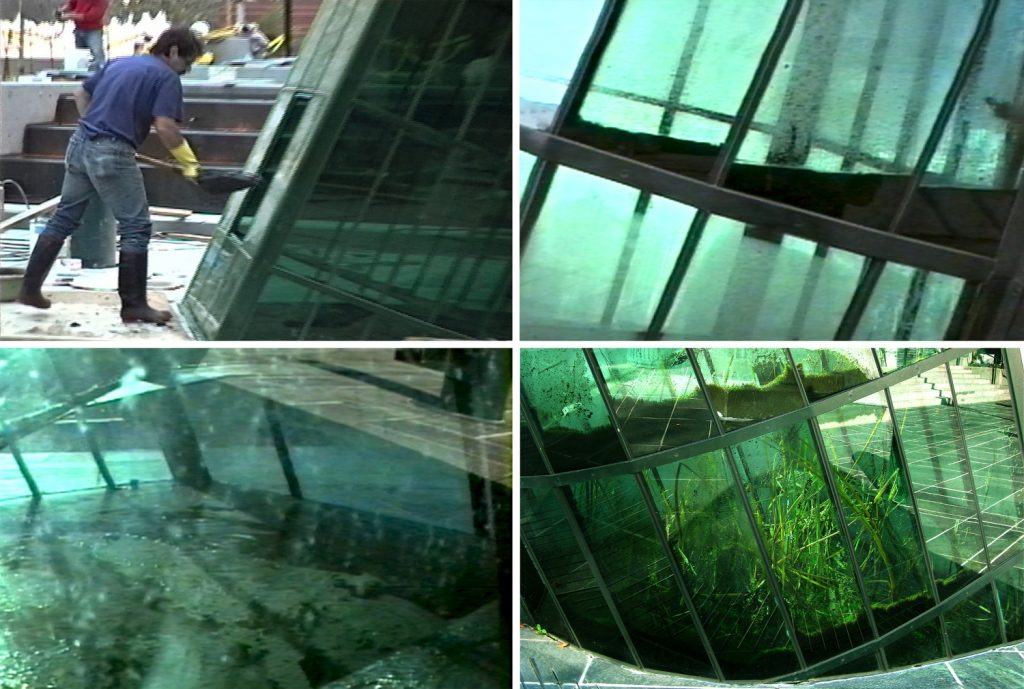
Deep Gradient/Suspect Terrain.., sediment placement, plant growth, 1993, steel, tinted glass, ocean floor sediment, fresh water mist, native flora, 20 ft. x 4 ft. x 8 ft. 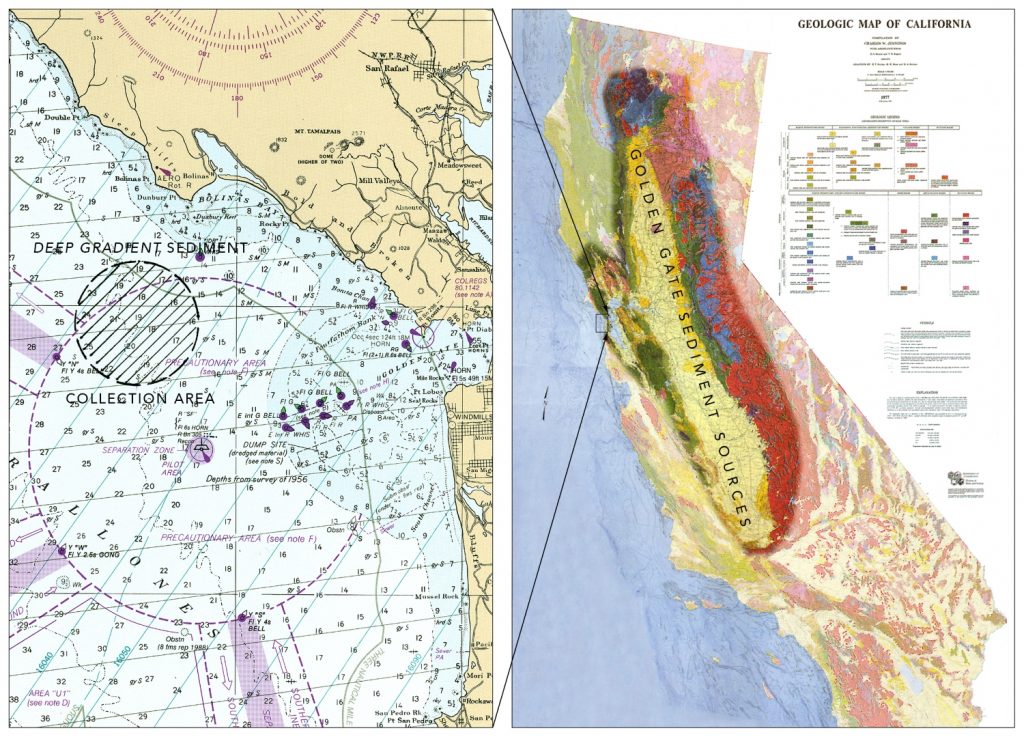
Deep Gradient/Suspect Terrain.., sediment collection/source maps, 1993, ink on paper, size variable. 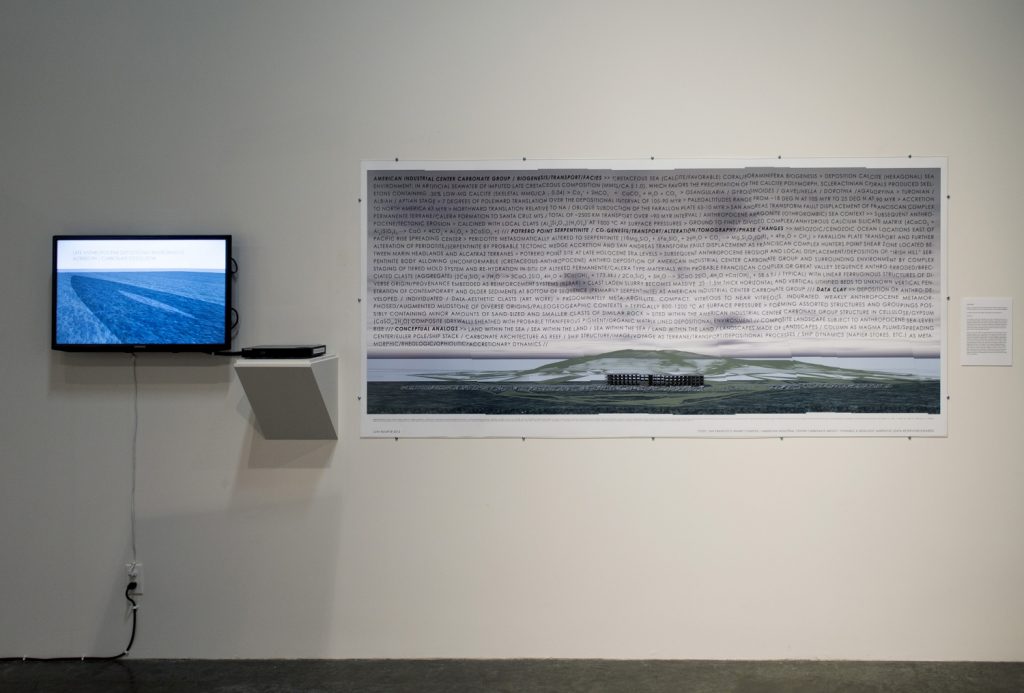
San Francisco Wharf Complex/American Industrial Center/Towards a Geologic Narrative, 2015, video, inkjet on paper, 140 in. 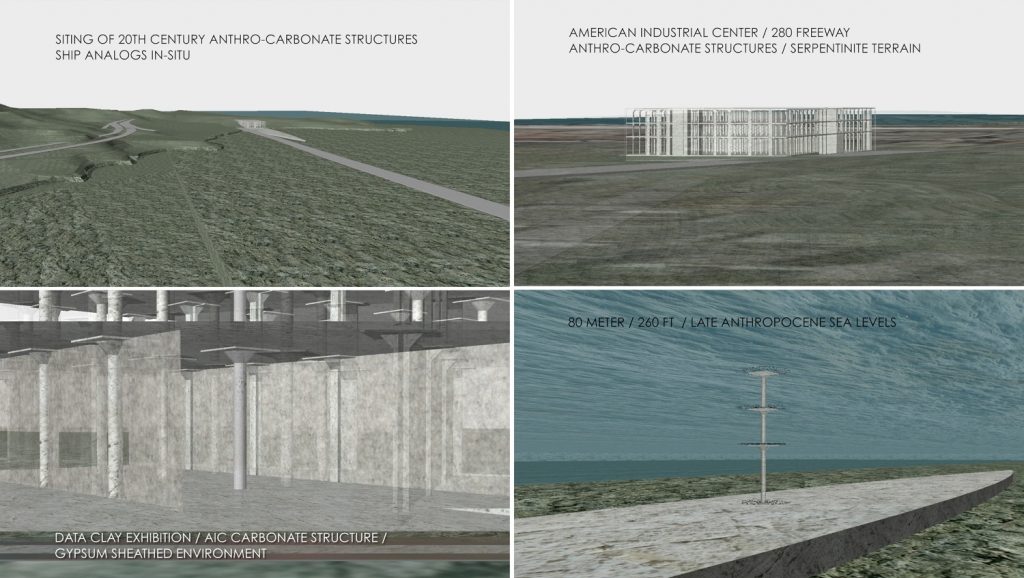
San Francisco Wharf Complex/American Industrial Center/Towards a Geologic Narrative, 2015, video stills, 30 in monitor. 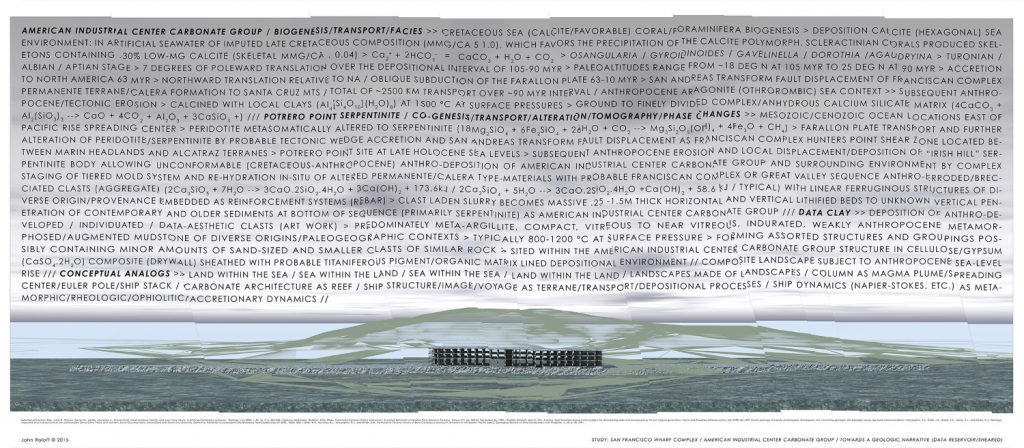
Study: San Francisco Wharf Complex/American Industrial Center/Towards a Geologic Narrative (Data Reservoir/Sheared), 2015, inkjet on paper, 96 in. 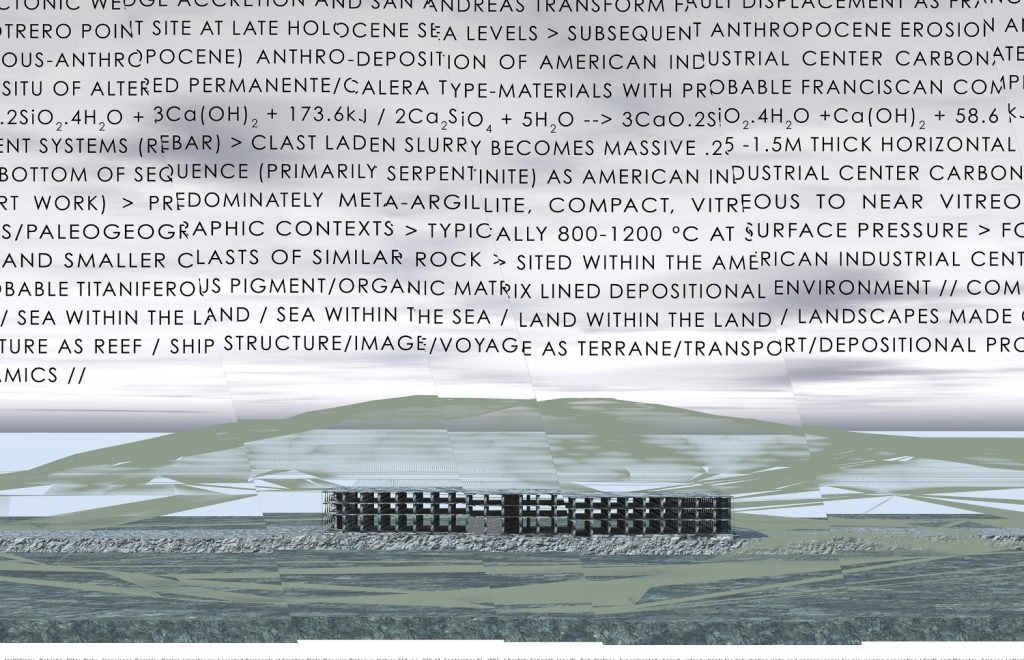
Study: San Francisco Wharf Complex/American Industrial Center/Towards a Geologic Narrative (Data Reservoir/Sheared), detail, 2015, inkjet on paper, 96 in. 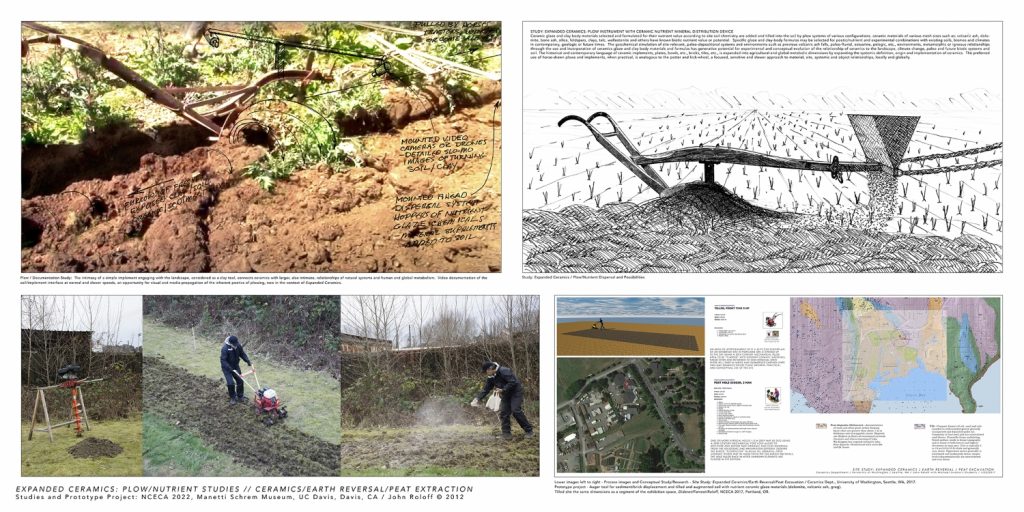
Expanded Ceramics: Plow/Nutrient Studies//Ceramics/Earth Reversal/Peat Extraction, 2017-2021, project documentation and conceptual proposal, inkjet on paper, 48 in. 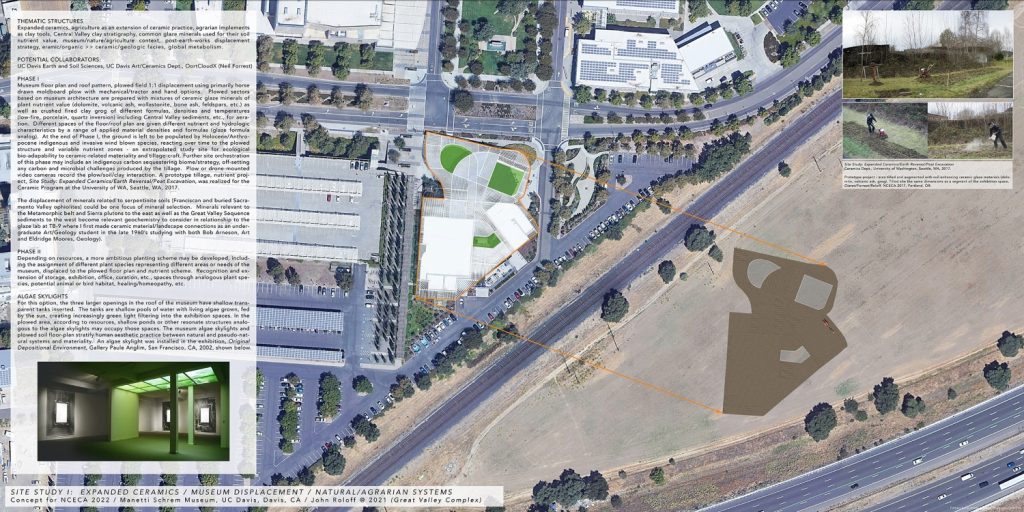
Site Study I: Expanded Ceramics/Museum Displacement/Natural/Agrarian Systems, Concept for NCECA 2022, 2021, conceptual proposal, inkjet on paper, 48 in. 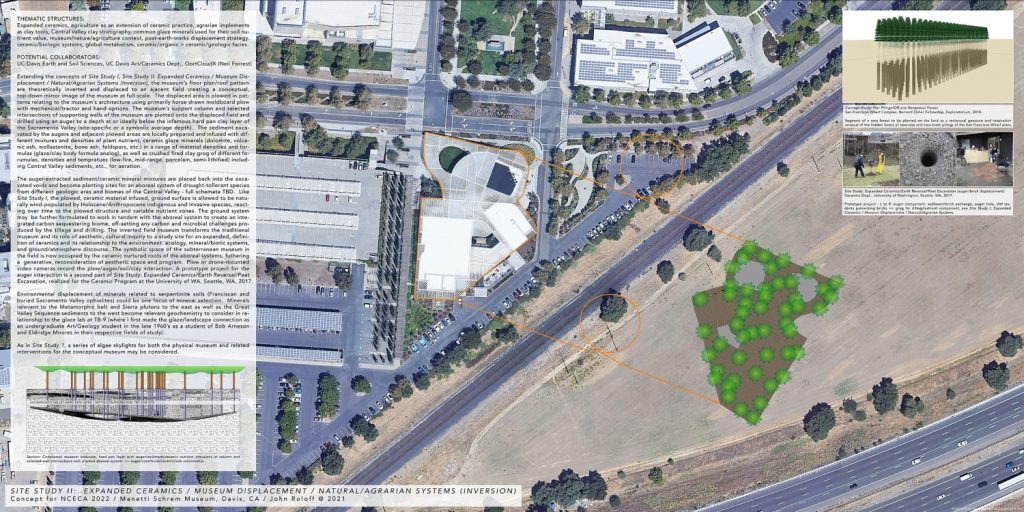
Site Study II: Expanded Ceramics/Museum Displacement/Natural/Agrarian Systems (Inversion), Concept for NCECA 2022, 2021, conceptual proposal, inkjet on paper, 48 in. 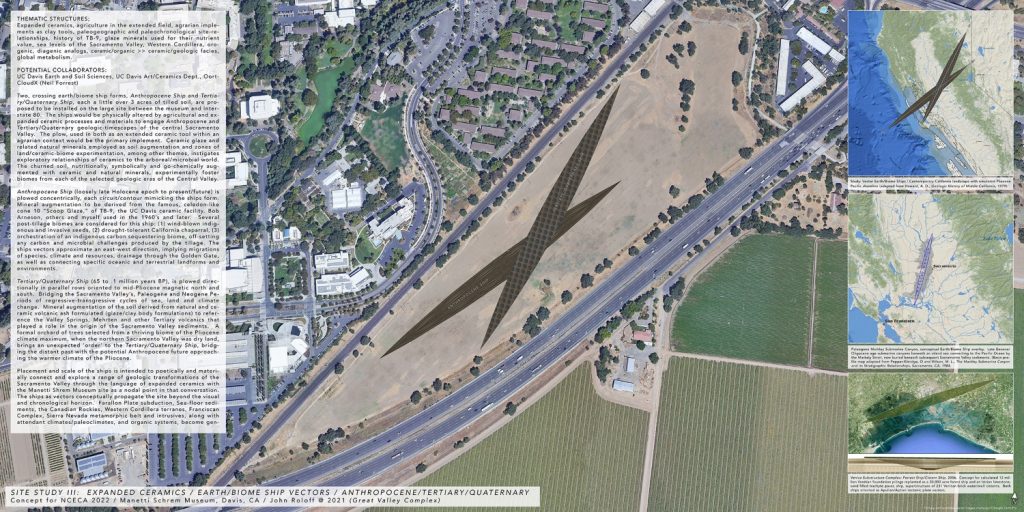
Site Study III: Expanded Ceramics/Earth/Biome Ship Vectors/Anthropocene/ Tertiary/Quaternary, Concept for NCECA 2022, 2021, conceptual proposal, inkjet on paper, 48 in.
John Roloff: Sentient Terrains, 1993-2021
For Sentient Terrains, I selected a series of large-scale, expanded ceramic works: Deep Gradient/Suspect Terrain.., Yerba Buena Gardens, San Francisco, CA, 1993, Study: San Francisco Wharf Complex/American Industrial Center/Towards a Geologic Narrative, Data Clay, Museum of Craft and Design, San Francisco, CA, 2015 and Expanded Ceramics: Plow/Nutrient Studies//Ceramics/Earth Reversal/Peat Extraction, University of Washington, Seattle, WA, Ceramic Department, 2017 with a series of proposals related to the California’s Central Valley, 2020.
Deep Gradient/Suspect Terrain, an environmental public artwork, utilized unfired oceanic sediment as an activating material. The sediment was collected from the Pacific Ocean continental shelf 4 miles out from the entrance to the San Francisco Bay and sealed in the steel and glass ship structure with an interior fresh water misting system. The sediment is derived from the interior valleys and mountains of California brought to the continental shelf by an extensive river system, which may understood as a mineralogic representative of that terrain. Germination of seeds dormant in the sediment created an interior ecosystem since the project was sealed in 1993. The project sits on recent architecture unconformably sited above the plate tectonic, accreted marine Franciscan Complex that comprise the bedrock of San Francisco.
Study: San Francisco Wharf Complex/American Industrial Center/Towards a Geologic Narrative, conceived for the exhibition Data Clay, curated by Del Harrow and Joshua Stein, is a spatiotemporal and material study of the exhibition’s physical space and site. Using a large geo/ceramic-analytic, graphic panel and video animation of the geologic evolution of the site, this study suggests a paleo-geologic/expanded ceramic context for the ceramic-based work of other artists and designers in the exhibition. The panel and video explore the material origin and transformation of the museum’s site and architecture from calcium and other ions of Cretaceous seawater, their depositional construct and transport, to Anthropocene displacements and sedimentations.
The projects examined in the graphic, Expanded Ceramics: Plow/Nutrient Studies//Ceramics/Earth Reversal/Peat Extraction, 2017-2021, document an expanded ceramic, geo-agrarian, site-work and performance done at the University of Washington, and further explorations to conceptualize the plow as an expanded ceramic tool, interpret ceramic minerals as bio-nutrients within metabolic cycles and related wholistic narratives. This exploration provided the context for three studies of potential, expanded ceramic, geo-agrarian, paleo-ecological site-works for the landscape near the Manetti Schrem Art Museum on the UC Davis, Davis, CA campus. The Davis campus is renowned for its agriculture programs and the site of TB-9, the ceramic facility developed by Robert Arneson, with whom I studied as an undergraduate in the late 1960’s to early 1970’s.
Site Study I: Expanded Ceramics/Museum Displacement/ Natural/Agrarian Systems and Site Study II: Expanded Ceramics/Museum Displacement/Natural/Agrarian Systems (Inversion) propose two variations for the displacement of the museum’s site as a ceramic/agricultural examination of aesthetic practice expanded ceramics and ecology. Site Study III: Expanded Ceramics/Earth/Biome Ship Vectors/Anthropocene/Tertiary/Quaternary, looks at deeper geologic references to the Davis landscape, agrarian and ceramic practice in exploratory and geo-ecological terms using symbolic ship images as transecting vectors of time and place.



